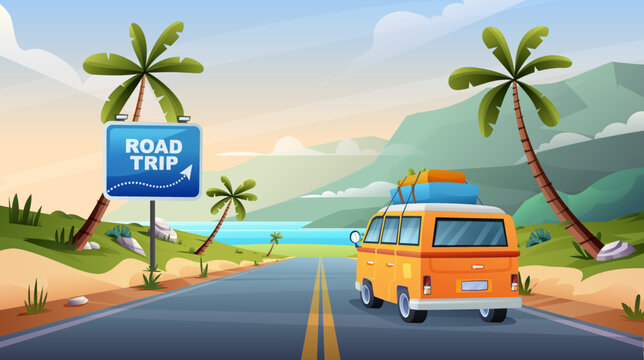Staying Alert and Energized: How to Drive Long Distance Without Getting Tired
Long road trips can be exhilarating adventures, but fatigue can quickly turn them into tiresome ordeals. Whether you’re a seasoned trucker or an occasional road warrior, staying alert and energized behind the wheel is crucial for safety and enjoyment.
This guide explores practical tips to keep you feeling fresh and focused during your next long drive.
Keys to Crushing Long Distances Without Fatigue:
- Plan for Rest & Breaks:
- Prioritize Sleep Before & During:
- Hydration is Key:
- Fuel Your Body with Smart Choices:
- Embrace Movement & Mental Stimulation:
- Optimize Your Car Environment:
- Beat Boredom with Strategic Entertainment:
- Know Your Limits & Share the Drive (if possible):
1. Plan for Rest & Breaks:
The key to conquering long distances lies in strategic planning. Schedule regular breaks every 2-3 hours, even if you don’t feel tired yet. Getting out of the car, stretching your legs, and getting some fresh air can significantly improve alertness.
Plan your route to include rest stops with amenities or scenic pullovers to break up the monotony of the drive. A short walk or light jog can further invigorate you and refocus your mind.
Also Read: Tips To Keep Your Family Safe On Road Trips
2. Prioritize Sleep Before & During:
Being well-rested before your trip is paramount. Aim for a full night’s sleep the night before your departure. If your drive spans multiple days, consider factoring in overnight stays or strategically timed naps at rest stops.
A 20-minute power nap can do wonders for boosting alertness and reducing fatigue. Remember, a well-rested driver is a safer driver.
3. Hydration is Key:
Dehydration is a major contributor to fatigue. Pack a reusable water bottle and consistently sip water throughout your drive. Avoid sugary drinks and excessive caffeine, which can lead to crashes later on. Opt for hydrating fruits and vegetables like watermelon, cucumber, or celery sticks for a refreshing snack that also replenishes fluids.
Also Read: How To Prepare For A Long Drive By Yourself
4. Fuel Your Body with Smart Choices:
Packing healthy snacks and meals is crucial for maintaining energy levels. Avoid heavy, greasy foods that can make you drowsy. Opt for protein-rich snacks like nuts, hard-boiled eggs, or yogurt to keep you feeling fuller for longer.
Fresh fruits and vegetables provide natural sugars and vitamins for sustained energy. Small, frequent meals are better than large ones that can leave you feeling sluggish.
5. Embrace Movement & Mental Stimulation:
Sitting for extended periods can lead to stiffness and fatigue. Incorporate regular movement into your breaks. Stretch your arms, legs, and back to improve circulation and reduce muscle tension. Simple exercises like jumping jacks or walking in place can further energize you.
Engage your mind with activities like listening to audiobooks, podcasts with stimulating topics, or playing car games (if you’re not the sole driver).
Also Read: The Ultimate Road Trip Car Checklist
6. Optimize Your Car Environment:
Maintaining a comfortable car environment can significantly impact your alertness. Set the temperature to a comfortable level, avoiding extremes that can make you drowsy. Open a window for fresh air circulation whenever possible.
Adjust the lighting to avoid glare or strain on your eyes. Investing in a comfortable seat cushion can provide additional support and reduce back pain during long stretches of driving.
7. Beat Boredom with Strategic Entertainment:
Long stretches of highway can become monotonous. Plan your entertainment options in advance. Create a playlist with upbeat music or calming nature sounds depending on your preference. Download audiobooks or podcasts to keep your mind engaged.
If you’re not the sole driver, take turns reading aloud from interesting articles or travel guides. Avoid activities that require intense concentration, as these can strain your eyes and contribute to fatigue.
8. Know Your Limits & Share the Drive (if possible):
Be honest with yourself about your limitations. Don’t push yourself beyond safe driving hours. Recognize the warning signs of fatigue, such as heavy eyelids, difficulty concentrating, or frequent yawning.
If you’re traveling with others, consider sharing the driving responsibility. Taking turns behind the wheel allows everyone to stay refreshed and alert on longer journeys.
Sharing the driving responsibility is especially important for night drives, when fatigue sets in more easily. If you’re a solo driver, planning your trip to avoid extensive night driving can significantly improve your safety and comfort.
So,
Conquering long distances without fatigue is all about planning and prioritizing your well-being. By incorporating these tips into your routine, you can ensure your next road trip is an enjoyable and energizing adventure. Remember to plan for regular breaks, prioritize sleep, and stay hydrated.
Make smart food choices and keep your mind stimulated with engaging activities. Optimize your car environment for comfort, and don’t hesitate to share the driving responsibility if possible.
By listening to your body and knowing your limits, you can turn long drives into exciting journeys filled with lasting memories. So buckle up, stay alert, and hit the road with confidence!







